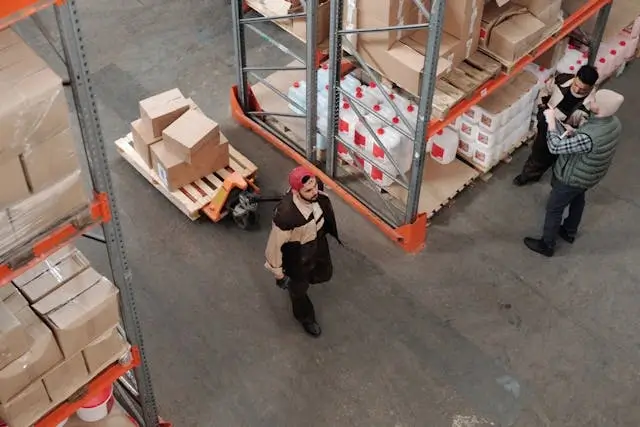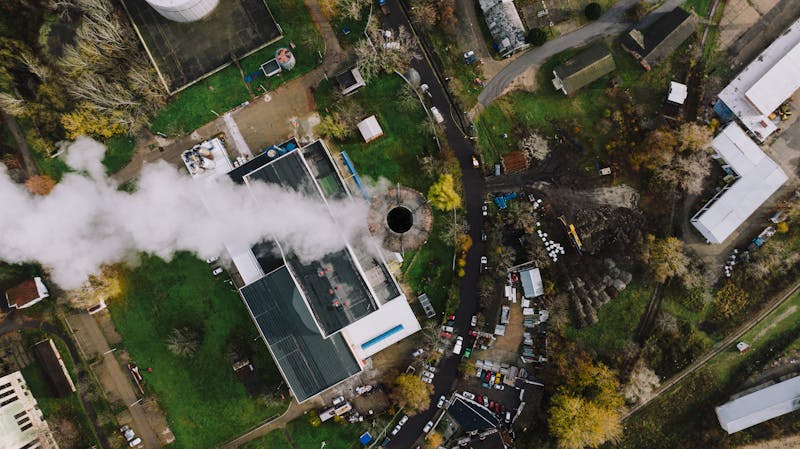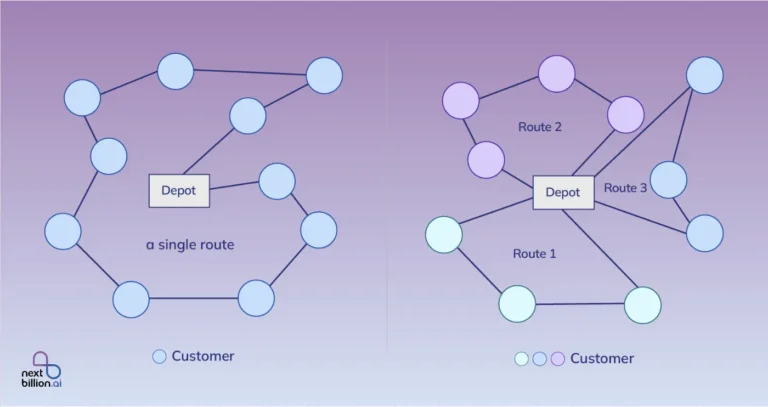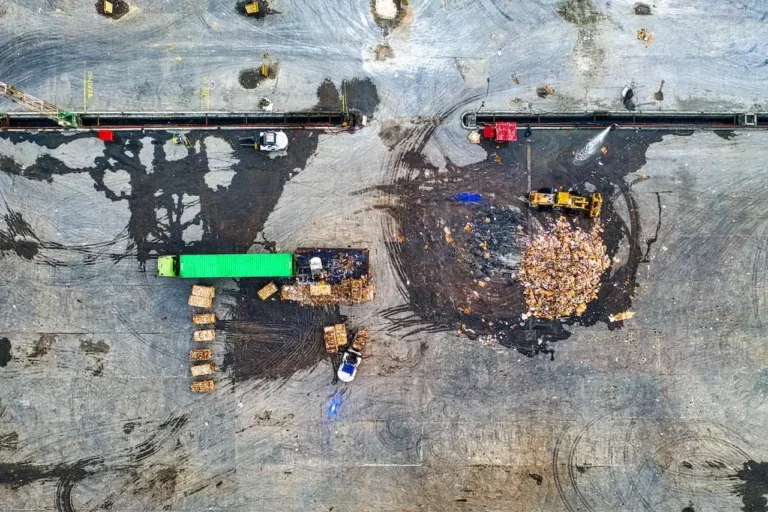
Table of Contents
Food waste is a global issue that affects our environment and economy. Every day, tons of food waste are collected from homes and workplaces. In fact, one of the main causes of food waste is restaurants and commercial kitchens. However, have you ever considered how this waste is picked up?
It’s not as simple as sending trucks to collect it. Poorly planned routes can waste fuel, increase costs, and cause more pollution. Also, when routes aren’t planned well, trucks drive long distances without picking up enough waste, wasting time and fuel.
What if we could make these routes smarter? That’s where route optimization helps. It helps in effective planning and, therefore, reduces cost, fuel requirement, and negative impact on our environment.
Curious to know how it all works? This article will walk you through simple and effective strategies to optimize food waste collection routes. After reading this article, you will understand how you can make this process more efficient and eco-friendly. Let’s learn how to optimize food waste collection routes effectively.
How to Start Optimizing Food Waste Collection Routes?
Restaurants and commercial kitchens can greatly improve the efficiency of their food waste collection routes by implementing NextBillion.ai’s Dynamic Route Optimization. It may seem difficult to optimize food waste collection routes, but it’s actually quite simple to get started. The following points help you to understand how to do it effectively:
1. Track Current Waste Collection Data
Before improving your routes, you need to understand your current system. Start by tracking your waste collection schedule. Look at how often waste is picked up, how full the bins are, and how long the process takes. Also, note how much food waste your business produces each day or week. This information helps you find patterns and areas to improve.
Example: If you notice that the trucks are only half-full when they come to pick up the waste, you might not need to collect it as often. For example, if you usually pick up waste three times a week, but the trucks are only half-full on the last two days, you could change to picking up twice a week instead.
2. Use Route Optimization Tools
Some tools can help you plan better routes. These tools use data about traffic, distance, and time to find the most efficient paths. You don’t need costly technology to start. Even simple tools like Google Maps can help. Begin by using these tools to plan shorter and less busy routes for your waste collection trucks.
Example: Instead of using the same route every day, a route optimization tool can find the shortest path with less traffic. If you usually drive through crowded downtown during rush hour, the tool might suggest side streets that save you minutes. Studies show that better routes can cut fuel use by up to 21%, which can save you a lot of money.
3. Assess Waste Generation Patterns
Look at the waste data you’ve collected. Find patterns, like busy days when you have more waste or slow days with less. By knowing these trends, you can change your collection schedule to fit your needs. For instance, if weekends have more waste, you can plan for more pickups then and fewer on slow days.
Example: If your restaurant produces more waste on weekends, you could add an extra pickup on Sunday evenings. This would help prevent overflowing bins on busy Mondays and keep the surroundings clean.
4. Monitor and Adjust Routes Regularly
Optimization is not a one-time job. After you start, keep checking your routes, location, and waste data often. Things can change as your restaurant grows, or different seasons can affect waste. Keep adjusting your routes to stay efficient. Be flexible and ready to make changes when needed. Small changes can make a big difference over time.
Example: If your restaurant creates more waste during the holiday season, add extra pickups for that time. For example, you might schedule extra pickups every Tuesday and Thursday in December, then go back to your usual schedule after the holidays. Studies show that food waste can increase by 30% to 40% during the holiday season.
5. Coordinate with Waste Collection Services
Talk to your waste collection provider. They might have ideas or tools to help improve your routes. Work together to adjust pickup times or routes based on how much waste your restaurant creates. Many waste companies offer plans that fit your needs. By working with them, you can make the process smoother.
Example: If your waste service is flexible, you can ask them to change pickup times on your busy days. For example, if Fridays are busy, request an early morning pickup instead of the afternoon to remove food waste on time. Good coordination can improve service significantly.
Technical Solutions for Optimizing Food Waste Collection Routes
Let’s see how modern technology can make route optimization easier for businesses. Below are some ways you can use technology to streamline food waster collection routes.
- Using GPS and Software for Smarter Routes: GPS and route planning software work together to create better routes. This helps cut down on fuel use and saves time.
- Using Data for Long-Term Improvements: By tracking and studying data over time, businesses can keep refining their routes and adapt to changes in waste or customer habits.
- Smart Bins with IoT Sensors: Some businesses put sensors in their bins to know when they are full. This helps schedule pickups more efficiently based on real-time data.
- Mobile Apps for On-the-Spot Route Changes: Drivers can use mobile apps to change routes instantly based on traffic, emergencies, or schedule changes, making the system more flexible.
- AI for Predictive Waste Collection: AI can analyze past data to predict when bins will be full. This helps schedule waste pickups more efficiently, preventing unnecessary trips and saving fuel costs.
Why Optimize Food Waste Collection Routes for Restaurants and Commercial Kitchens?
Optimizing food waste collection routes is more than just a way to save money, especially in the case of restaurants and commercial kitchens. It also contributes to a better life. Let’s break down why it’s important and how it can benefit your business.
1. Cost Savings
Planning better routes for waste collection can help your business save money. When routes are organized well, trucks don’t have to drive as far. This helps save fuel, which means you spend less on fuel costs. It also means your trucks won’t get used as much, so they’ll need fewer repairs, saving you on maintenance costs.
Optimized routes also allow your waste collection teams to finish their work faster. They won’t need to work extra hours. Thus, you’ll pay less in overtime. With the help of efficient plans, you and your staff can focus on other tasks instead of managing overflowing bins.
Example: Let’s say your restaurant’s waste collection truck drives 30 miles to pick up waste three times a week. By optimizing the route, you reduce the distance to 20 miles per trip. Over a month, this saves 120 miles of driving (10 miles saved per trip × 12 trips per month).
Result: If the truck gets 5 miles per gallon and fuel costs $4 per gallon, that’s a savings of 24 gallons of fuel, or $96 per month, just from driving less.
2. Better Service
Optimized routes contribute to timely waste collection. This avoids a messy atmosphere, overflowing bins, and bad smells. It is beneficial to your restaurant’s business that it remains clean and that the area around it is well-kept.
Also, services run smoothly when waste pickups are reliable. When routes are optimized, there is a reduced chance of missed or delayed waste collections. Maintaining a consistent waste management routine is made simpler by this uniformity.
Example: Your restaurant throws away a lot of food on the weekends, but the trash is only picked up twice during the week. If you change the schedule to add an extra pickup on the weekend, your trash bins won’t overflow.
Result: When bins overflow, they can smell bad and attract bugs. By changing the pickup schedule, you can avoid these issues, keeping your restaurant clean and inviting for customers.
3. Environmental Impact
Optimizing waste collection routes helps the environment. When trucks drive shorter distances, they create less pollution. This lowers your carbon footprint and keeps the air cleaner. Using less fuel also saves natural resources. For restaurants and commercial kitchens that care about sustainability, this is a great way to show customers you are helping the planet.
Example: A regular waste truck releases about 22 pounds of carbon dioxide (CO2) for every gallon of diesel fuel it uses. If your restaurant can make its routes better and use 10 gallons less fuel each month, it will cut CO2 emissions by 220 pounds.
Result: This is like saving the amount of CO2 produced by driving a car for around 250 miles. It’s also similar to planting two trees, which helps lower your restaurant’s impact on the environment.
4. Improved Safety
Shorter routes help keep drivers safe. When trucks are on the road less, there are fewer chances for accidents. Good planning helps avoid busy or dangerous areas, which keeps drivers safer. Safe routes also help your business avoid fines and legal problems. When trucks follow traffic laws and stay away from risky areas, everyone stays safer.
Example: Before you fixed the routes, your trucks went through crowded areas. This made accidents more likely. By picking a safer, less busy route, drivers face fewer dangers.
Result: This reduces accidents and keeps drivers safe. It also helps prevent costly repairs for the trucks and lowers the chances of legal issues.
5. Increased Efficiency
Waste collection is faster and more efficient with optimized routes. It is possible to immediately change routes in the event of delays, such as traffic jams or road repairs. This guarantees that, despite any delays, garbage is collected on schedule.
Better decision-making is also facilitated by data from optimized routes for managers. They can determine the number of trucks and staff required for each location by observing which routes perform the best.
Example: Your waste collection staff spends 8 hours per week utilizing food waste from several restaurants. By optimizing the route, they can complete the same pickups in 6 hours.
Result: By saving 2 hours of work each week, you reduce labor costs. If workers are paid $15 per hour, that’s $30 saved per week, or $120 saved each month, just by shortening the time spent on the road.
6. Streamlined Operations at Waste Depots
Better routes help waste depots run smoothly. Trucks arrive on time and in a steady stream, so there are no delays in processing. When depots know when trucks will arrive, they can manage their work better. This also helps depots handle sudden changes. Whether there’s more waste than expected or road closures, good routes keep depots organized and efficient.
Example: Right now, all your waste collection trucks arrive at the depot at the same time. This causes delays. By spacing out the pickups and improving the routes, trucks arrive at different times.
Result: With fewer delays at the depot, waste gets processed faster. This means shorter wait times and a smoother operation overall.
7. Regulatory Compliance
Better waste collection routes help your business follow local rules. Many cities have strict guidelines for when and how to utilize food waste. By keeping a reliable schedule, you can avoid fines. Also, good routes help prevent overflowing bins, which can break health and safety codes.
Example: Your city has strict rules about when to pick up waste and how full bins can get. By improving the routes, your business can make sure waste is collected on time. This stops bins from overflowing and keeps you from getting fined.
Result: By following a good pickup schedule, you meet local rules and avoid expensive fines or legal problems.
Challenges in Food Waste Collection Routes Optimization
Route optimization for food waste collection comes with its own set of challenges. Here are some of the main issues that need to be considered.
1. Balancing Different Goals
Optimizing routes involves many factors. You need to think about travel distance, time, collection costs, and social effects. For example, the shortest route might not be the fastest because of traffic. Cutting costs could also affect service quality or safety.
Solution: Use a priority system. Figure out which factors are most important for your operation. For example, if saving money is key, change routes to focus on that but still pay attention to service quality.
2. Collection Costs
Cost is a big concern, especially with private contractors. Keeping costs down means using trucks wisely and managing operating hours well. It’s better to have fewer trucks that are nearly full than many trucks that are not full. Balancing these costs while providing timely service takes careful planning.
Solution: Optimize truck use by scheduling pickups during less busy times. Also, try to use fewer nearly full trucks. This can save money on fuel and maintenance.
3. Distance and Travel Time
The main goal is to connect trucks from where they start to disposal sites while collecting as much waste as possible. Travel time depends on how long it takes to empty bins and traffic conditions. Making efficient routes can be complicated and needs real-time data, which can be tough to manage.
Solution: Use route planning software. This technology can look at traffic patterns and change routes as needed. Even basic tools like Google Maps can help find faster paths.
4. Data Management
Collecting and looking at waste data is important for improvements. But it can be difficult to manage. Restaurants may not have enough resources or technology to track waste accurately.
Solution: Invest in easy-to-use data management systems. These can make tracking waste simpler and help spot patterns without being too complicated.
5. Real-Time Adjustments
Conditions can change fast, like traffic jams or emergencies. Changing routes on the spot can be tough but is important for staying efficient. Drivers might need tools or apps to help with these quick changes.
Solution: Give drivers mobile apps that provide real-time updates. These apps can suggest route changes based on current traffic or emergencies.
6. Customer Satisfaction
Keeping good service is very important for customer satisfaction. Missing pickups or being late can frustrate customers and harm your business’s reputation. It’s a constant challenge to keep routes efficient while meeting what customers expect.
Solution: Talk regularly with your waste collection optimization team. This helps catch problems early and keeps customers informed about pickup schedule changes.
How Does NextBillion.ai’s Dynamic Route Optimization Help You in Optimizing Food Waste Collection Routes?
Restaurants and commercial kitchens can greatly improve the efficiency of their food waste collection routes by implementing NextBillion.ai’s Dynamic Route Optimization. Here are the benefits of route optimization using AI:
- Real-Time Traffic Data: The platform uses live traffic information to change routes quickly. If a road is busy or closed, the system can find another route fast. This cuts down on delays and helps make sure pickups are on time, preventing overflow and keeping things clean.
- Flexible Route Adjustments: The platform lets you quickly change routes for last-minute needs, like unscheduled pickups or different waste levels. This flexibility helps keep everything running smoothly.
- Scalability: As your business grows, NextBillion.ai’s system can easily handle more waste and more complex collection data needs. This helps keep your operations efficient and effective.
- User-Friendly Interface: The easy-to-use interface lets staff quickly learn and use the route optimization tools. This means they can start using new strategies without needing a lot of training.
- Data-Driven Insights: With detailed analytics, you can watch waste collection patterns over time. These insights help you make smart decisions to improve your routes and schedules based on real data.
Optimizing food waste collection routes is very important for restaurants and commercial kitchens. It saves money by reducing fuel and labor costs while improving service and cleanliness. Shorter routes also cut down on pollution, helping the environment and making driving safer.
With NextBillion.ai’s Dynamic Route Optimization, businesses can use live traffic data and quickly change routes. This technology helps keep things running smoothly as businesses grow and offers easy-to-use tools and helpful data for ongoing improvements.
Using these strategies with NextBillion.ai makes waste collection more efficient, eco-friendly, and better for customers. This helps create a cleaner and healthier planet along with improving business efficiency.
About Author
Rishabh Singh
Rishabh Singh is a Freelance Technical Writer at NextBillion.ai. He specializes in Programming, Data analytics and technical consulting, turning complex tech into clear and engaging content.









